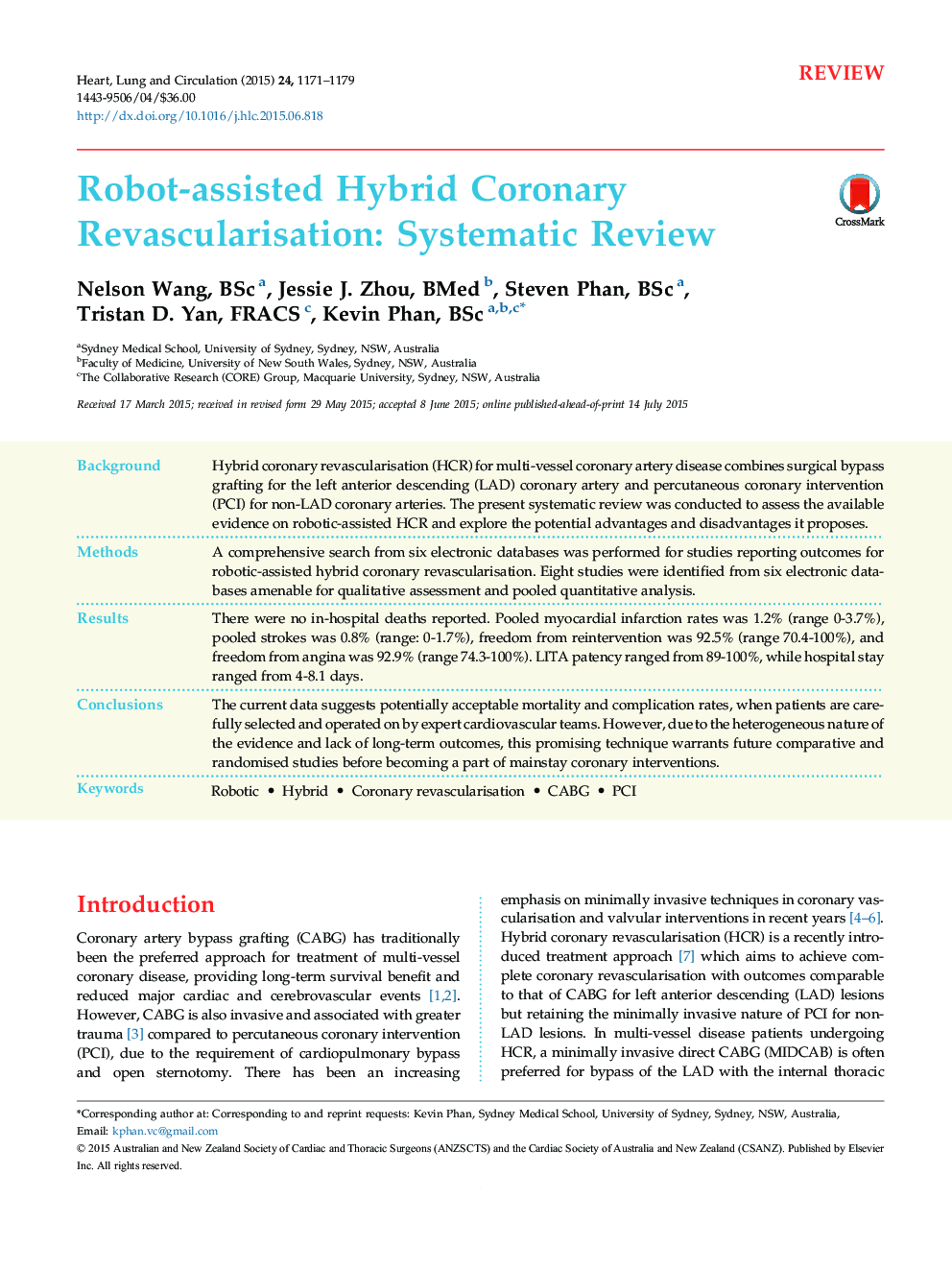| Article ID | Journal | Published Year | Pages | File Type |
|---|---|---|---|---|
| 5959011 | Heart, Lung and Circulation | 2015 | 9 Pages |
BackgroundHybrid coronary revascularisation (HCR) for multi-vessel coronary artery disease combines surgical bypass grafting for the left anterior descending (LAD) coronary artery and percutaneous coronary intervention (PCI) for non-LAD coronary arteries. The present systematic review was conducted to assess the available evidence on robotic-assisted HCR and explore the potential advantages and disadvantages it proposes.MethodsA comprehensive search from six electronic databases was performed for studies reporting outcomes for robotic-assisted hybrid coronary revascularisation. Eight studies were identified from six electronic databases amenable for qualitative assessment and pooled quantitative analysis.ResultsThere were no in-hospital deaths reported. Pooled myocardial infarction rates was 1.2% (range 0-3.7%), pooled strokes was 0.8% (range: 0-1.7%), freedom from reintervention was 92.5% (range 70.4-100%), and freedom from angina was 92.9% (range 74.3-100%). LITA patency ranged from 89-100%, while hospital stay ranged from 4-8.1 days.ConclusionsThe current data suggests potentially acceptable mortality and complication rates, when patients are carefully selected and operated on by expert cardiovascular teams. However, due to the heterogeneous nature of the evidence and lack of long-term outcomes, this promising technique warrants future comparative and randomised studies before becoming a part of mainstay coronary interventions.
